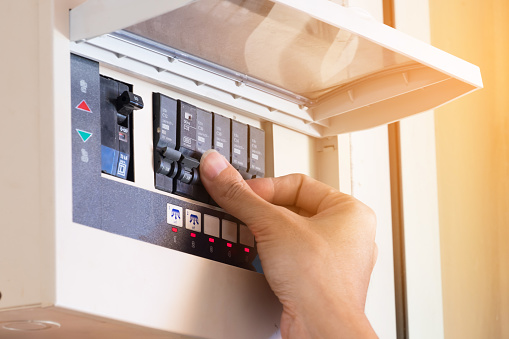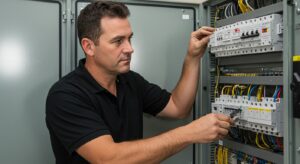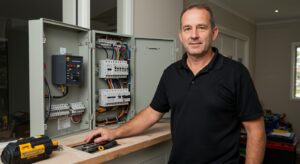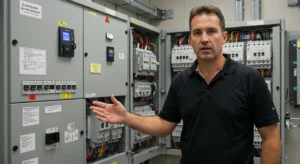Residual current devices (RCDs) are essential safety features for any home, protecting against electrical shock and other hazards. This blog post will discuss the importance of RCD safety switches and how they can help ensure your family’s safety.
What Are The Main Types Of RCD?
There are three primary categories of RCDs (Residual Current Devices): Fixed RCDs, Socket-Outlet RCDs, and Portable RCDs. Here is an overview.
Fixed RCDs
These components are situated in the electrical distribution board or fuse box of a building, offering safeguarding for all the electrical circuits and devices connected to the distribution board.
Socket-outlet RCDs
These electrical outlets, Plug-In RCDs, are specially designed to fit into standard sockets. They offer protection for any electronic devices plugged into the socket-outlet RCD.
Portable RCDs
These RCD plugs, or residual current devices, can be plugged into any power socket to shield any electrical appliance connected to the plug. Portable RCDs are helpful for outdoor activities like camping or DIY projects.
What Is The Purpose Of RCDs?
A Residual Current Device (RCD) safety switch is a safety feature that quickly cuts the electrical current flow in a circuit in the event of abnormal current leakage.
It protects personnel from electrical shock and prevents hazardous electrical fires. The switch utilises current monitoring to detect any irregularities in the electrical current running through the circuit and quickly deactivates the power supply when an abnormal current occurs.
A potential fault in the wiring, an appliance, or a person’s contact with an electrical current, may cause this leakage.
The Importance Of RCD Safety Switches
Protection from Electrical Shocks
Electrical shocks can be hazardous and can arise in various contexts. For instance, one may inadvertently contact a live wire, or moisture may contact defective equipment.
In such scenarios, an RCD safety switch can swiftly recognize the irregular current and deactivate the power, avoiding significant harm or fatality.
Protection from Electrical Fires
Electrical fires can be fatal and, if left undetected and unchecked, can spread quickly. Installing an RCD safety switch can detect wiring and appliance issues, swiftly cutting off the power supply and avoiding the potential ignition or propagation of an electrical fire.
Compliance with Building Codes
Installing an RCD safety switch in residence is a requirement in many countries when constructing a new home or undergoing renovations.
Having such a switch in place ensures compliance with local building codes and regulations, which can be invaluable should one choose to sell the home, as potential buyers expect the property to adhere to safety standards.
Easy to Install and Maintain
Installing and maintaining RCD safety switches is easy.
It is advisable to have a certified electrician install the controller, and once that is complete, no further action is required. It is essential to periodically inspect the switch to ensure its optimal operation, requiring a minimal investment of time.
How Much Does Rcd Protection Cost?
The price of Residual Current Device (RCD) protection is contingent upon several elements, such as the amount and type of RCDs required, the magnitude and intricacy of the electrical system, and the installation cost.
Fixed RCDs
The price of a fixed RCD may vary from approximately $50 to $150, depending on the make and the available features.
Installation costs will depend upon the electrical system’s complexity and the distribution board’s position, but usually, they fall within the range of $100 to $300 per RCD.
Socket-outlet RCDs
The prices of socket-outlet Residual Current Devices vary from approximately $20 to $50, depending on the maker and specifications.
Installation is straightforward since they are compatible with the standard electrical socket.
Portable RCDs
A portable RCD’s price varies, typically from $30 to $80, depending on the model and its features.
Frequently Asked Questions
What do I do if my home doesn’t have an RCD switch?
It is imperative to recall that Residual Current Devices (RCDs) are a crucial safety measure safeguarding against electric shock and electrical fires. If no RCD switch is present in the home, take alternative options or have RCD protection installed to guarantee electrical safety.
How do I check if I have RCDs installed on my property?
Verify the presence of Residual Current Devices (RCDs) in your property by following these steps.
- Locate your electrical distribution board
- Look for RCD switches
- Check for socket-outlet RCDs
- Check for portable RCDs




